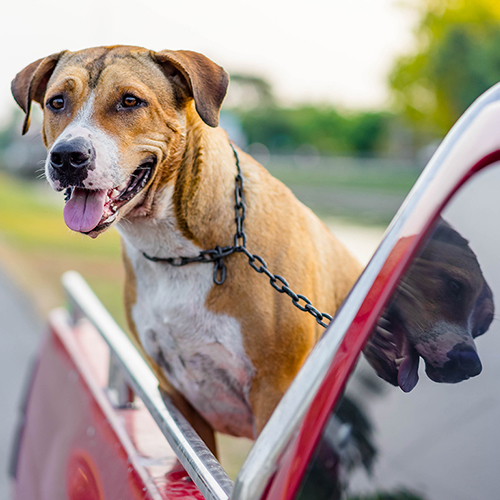
As much as Americans love their dogs, far too many of our canine friends end up abandoned at shelters.
Most often, according to a study by the National Council on Pet Population Study and Policy, this happens for unforeseen reasons — a move, personal problems, an inflexible landlord. But sometimes it is because the owner did not take into consideration the breed’s traits when acquiring the dog. It’s not easy to think about the potential compatibility of you and your pet when cuddling a cute puppy.
24/7 Wall St. has compiled a list of the dog breeds most commonly found at shelters throughout the country. Some of the breeds on the list — like pit bulls or Rottweilers — are not so surprising. Bred to herd much larger animals such as cattle, they have retained some of those fearless and protective characteristics and need to be carefully trained. Other dogs on the list, like the husky or border collie, are especially active and need a lot of exercise. That requires time — something their owners may not have considered.
The dog most often found at American shelters is the Labrador retriever, also the most popular breed in the country. This apparent contradiction — that the most beloved dog is also one of the most readily given up — can most likely be attributed to the sheer number of retrievers in American households.
To identify the 30 dog breeds most commonly found at rescue shelters, 24/7 Wall St. reviewed data from PetFinder.com. This website represents most of the shelters and rescue groups in the United States and provides real-time data for the various breeds listed as available for adoption. Many of the dogs found at the rescues are mixes but are identified by the breed that best matches their looks and personalities. PetFinder.com analyzed over 240 dog breeds.
24/7 Wall St. added information related to each breed’s personality, trainability, and other traits from the American Kennel Club. AKC experts used breed standards, written by dog breed organizations that specify size, activity level, intelligence, and other attributes.
Average life expectancy data comes from a study: “Single-Nucleotide-Polymorphism-Based Association Mapping of Dog Stereotypes.” This research analyzed the DNA of 148 domestic dog breeds based on their size, temperament, trainability, and their average age at death. The longevity data primarily represents owner surveys.
Click here to see the most common dog breeds found in shelters.
Click here to see the methodology.

30. Shar-pei
> Pets available: 1,032
> Avg. life expectancy: 9 years
> AKC popularity ranking: 61
Shar-pei have some very distinctive characteristics, including a rough coat and folds of wrinkled skin. They are intelligent but stubborn and need to be trained at an early age. Unfortunately, shar-pei are prone to a range of health conditions, some of which are unique to the breed. Among these are dermatological conditions, including allergic skin disease, eye disorders, and various bone and joint problems. While diseases and conditions are always a scare, all dogs experience specific health concerns and the shar-pei is no exception.
[in-text-ad]

29. Great Dane
> Pets available: 1,053
> Avg. life expectancy: 8.4 years
> AKC popularity ranking: 14
Great Danes can make for great pets. They are dependable, patient, and friendly. But for some, their biggest drawback is reflected in their name – they are huge. Standing on its hind legs, a Great Dane can be taller than its owner, and weigh up to 200 pounds. The male can be even heavier.
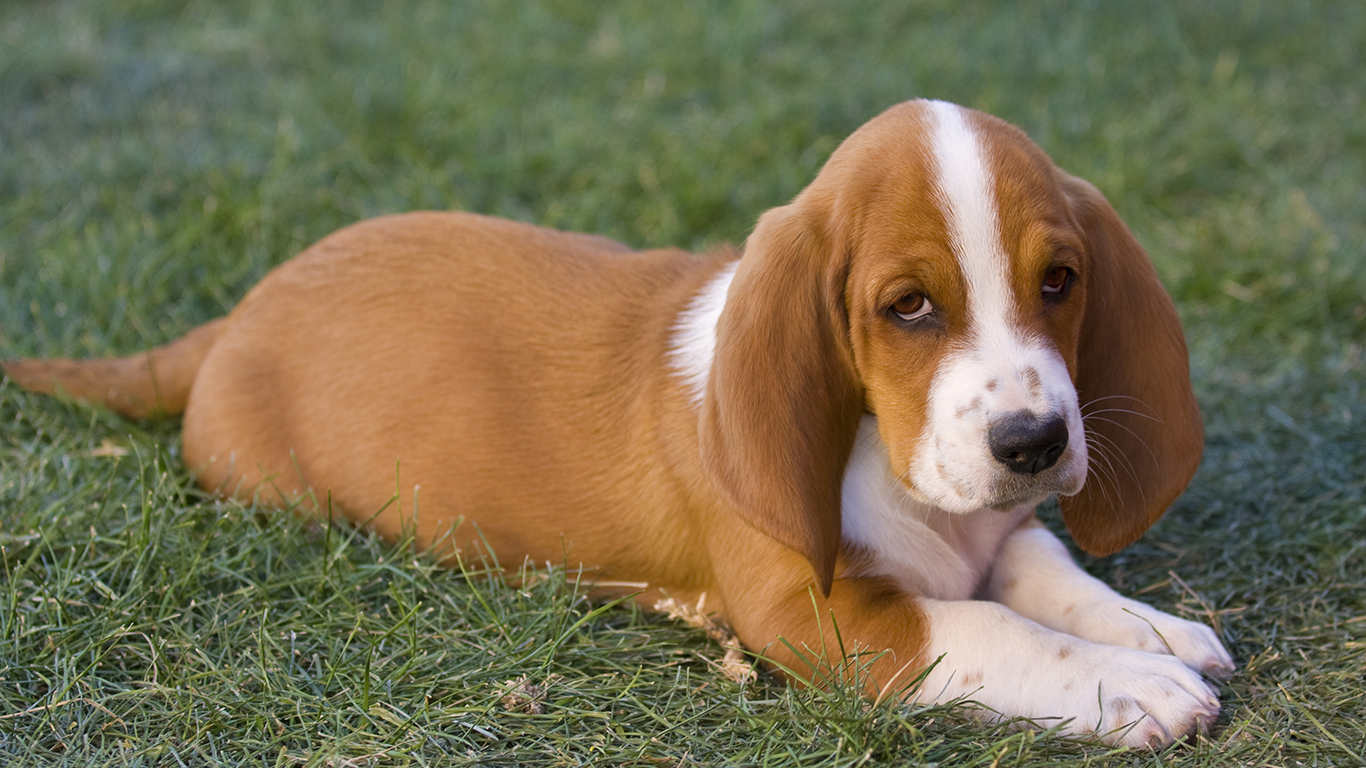
28. Basset Hound
> Pets available: 1,055
> Avg. life expectancy: 12.8 years
> AKC popularity ranking: 39
The basset hound is known for its droopy features, hunting ability, and sense of smell, which is second only to that of the bloodhound. The breed is prone to a number of health conditions, including obesity, which can lead to back problems for basset hounds, so regular exercise is needed.

27. Siberian Husky
> Pets available: 1,087
> Avg. life expectancy: 12 years
> AKC popularity ranking: 12
Bred as a sled dog, the Siberian husky is known for its endurance. It requires regular exercise and prefers running to walking. In fact, the husky is so energetic it has to be kept leashed or it will run away. It also has a strong predatory instinct and needs to be watched around smaller pets.
[in-text-ad-2]
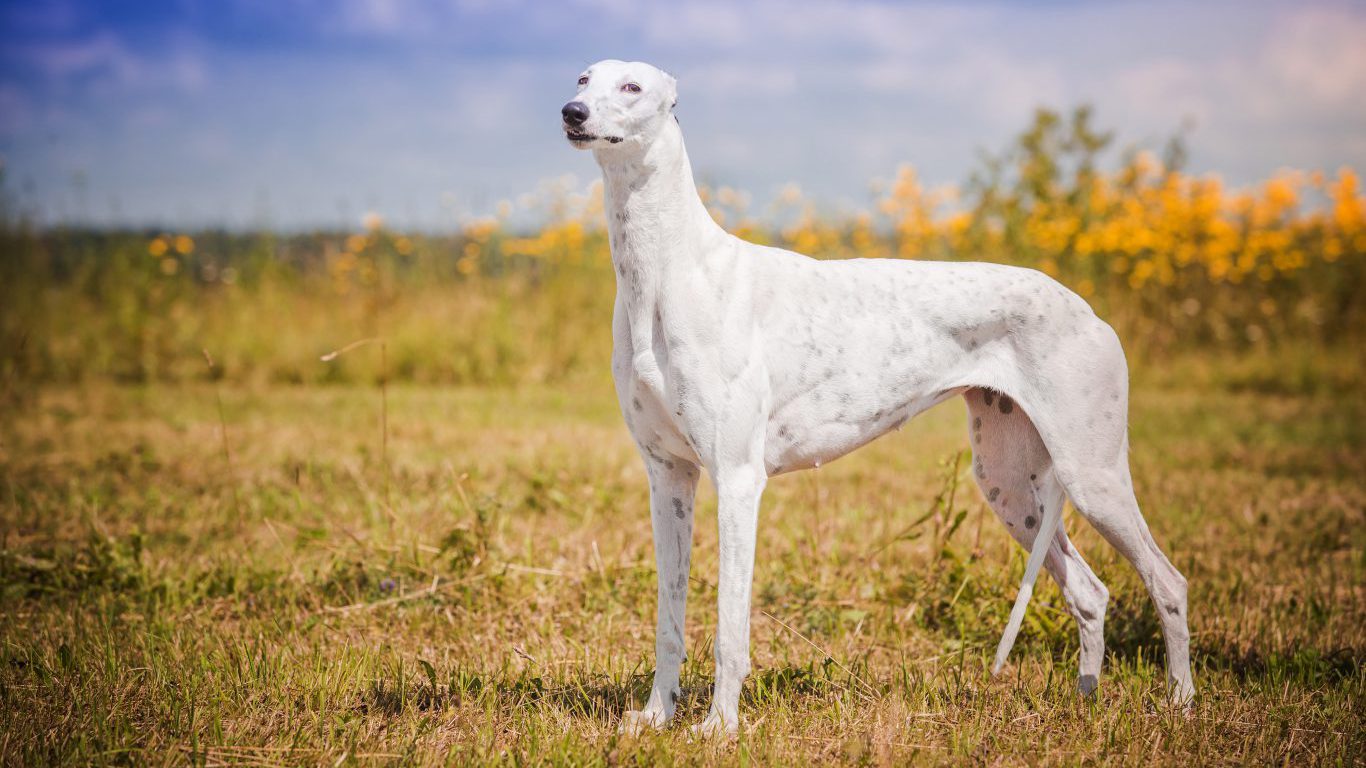
26. Greyhound
> Pets available: 1,087
> Avg. life expectancy: 13.2 years
> AKC popularity ranking: 151
The greyhound is the fastest dog breed with a racing speed of more than 40 mph. It has an independent spirit and needs patient training. Because of its athleticism, the greyhound also needs daily exercise, and owners should expect injuries associated with athletes, such as pulled muscles. The greyhound otherwise likes to sleep for much of the day and does not require a lot of space.
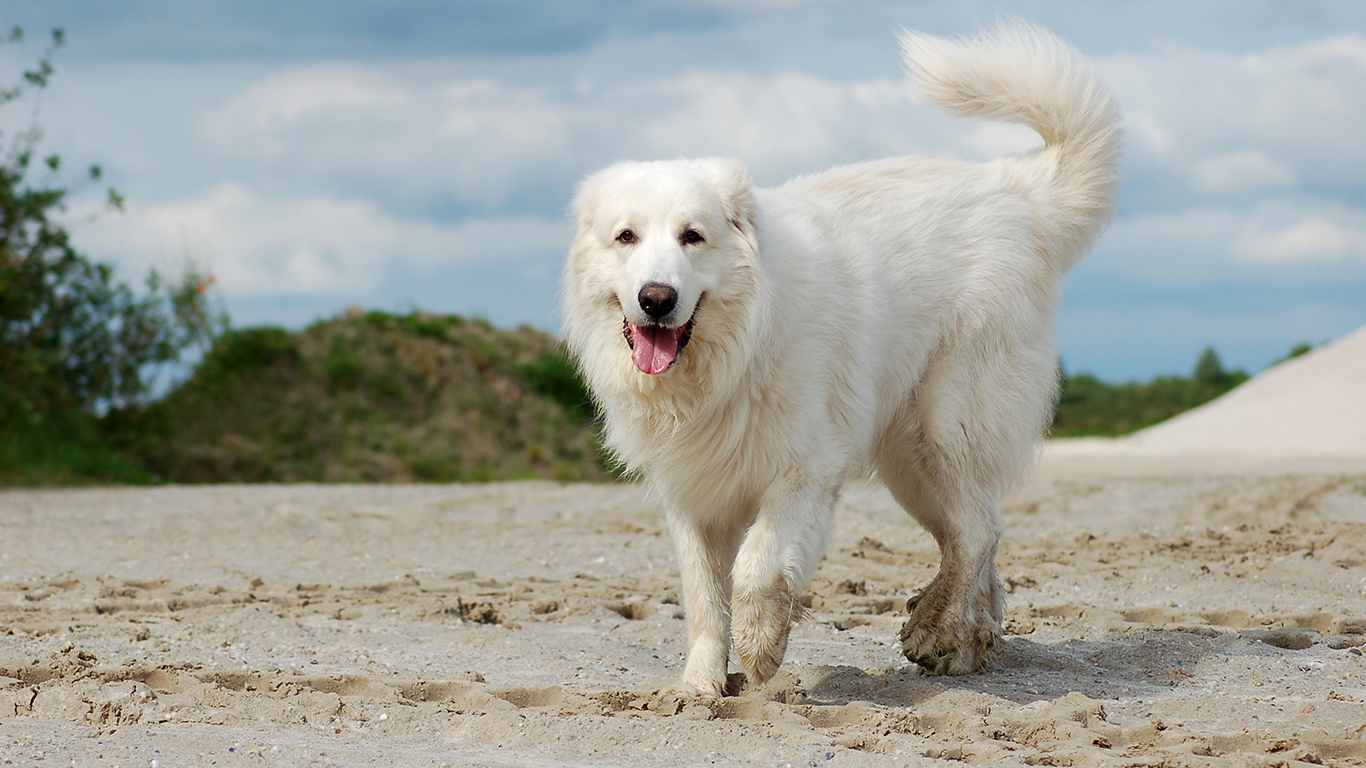
25. Great Pyrenees
> Pets available: 1,122
> Avg. life expectancy: N/A
> AKC popularity ranking: 67
The Great Pyrenees is a strikingly beautiful breed. However, as it was bred as a guard dog it requires careful training and socialization or it can become aggressive. It is not a great apartment dog as it needs a lot of exercise and has a tendency to bark a lot.
[in-text-ad]

24. Pug
> Pets available: 1,200
> Avg. life expectancy: 13 years
> AKC popularity ranking: 32
Pugs have a lot of personality in a small package, and they like attention and affection. They are intuitive dogs and sensitive to the moods of their owners, which makes them good companions. They like to play with children, but some supervision may be needed. Unfortunately, they are susceptible to Pug dog encephalitis, a disease unique to the breed.
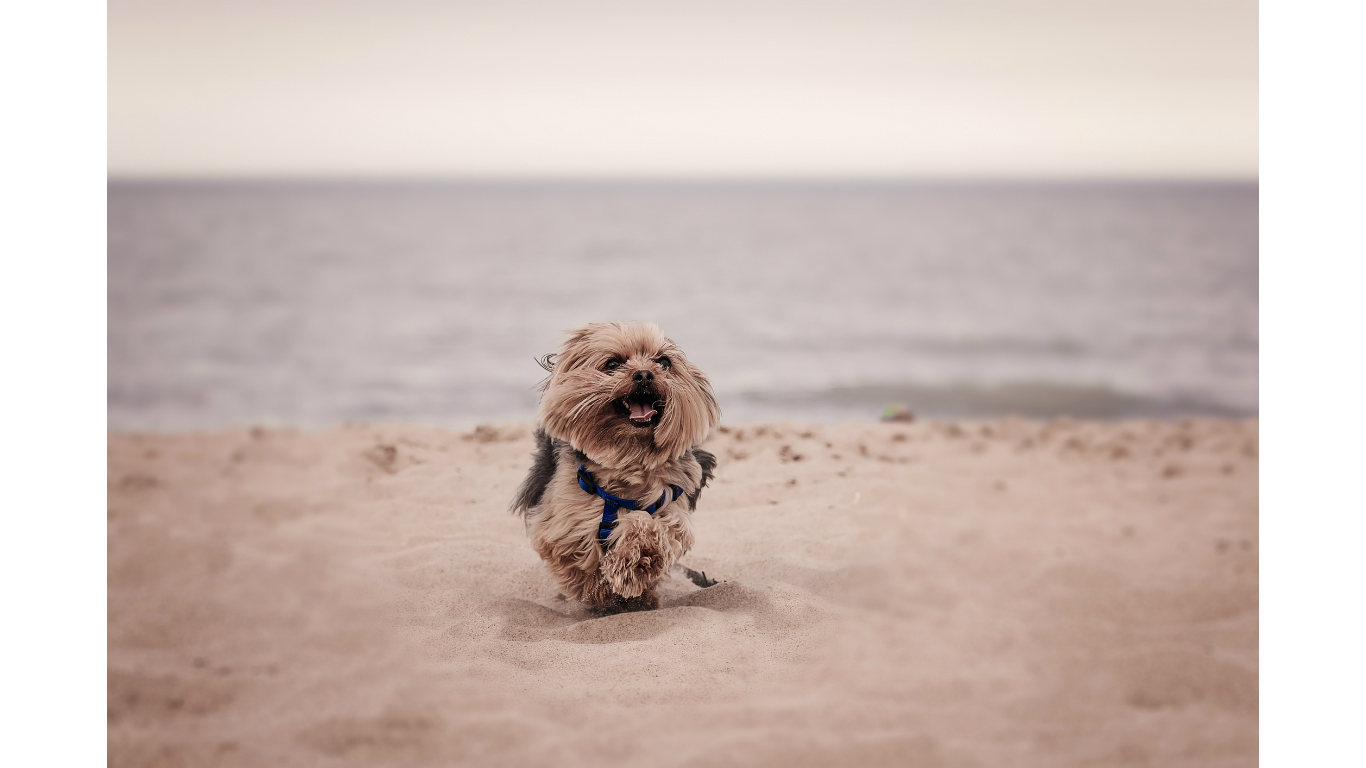
23. Yorkshire Terrier
> Pets available: 1,226
> Avg. life expectancy: 12.8 years
> AKC popularity ranking: 9
Though members of the toy group of dogs, Yorkies are terriers by nature and are curious and energetic. These dogs are known to be great companions but require regular grooming.

22. Pointer
> Pets available: 1,295
> Avg. life expectancy: 14 years
> AKC popularity ranking: 117
Bred as a hunting dog, the pointer has the stamina to run for hours. Consequently, it needs at least an hour of vigorous exercise every day, or else it can become frustrated and troublesome. The pointer is constantly on the lookout for birds and can be easily distracted.
[in-text-ad-2]
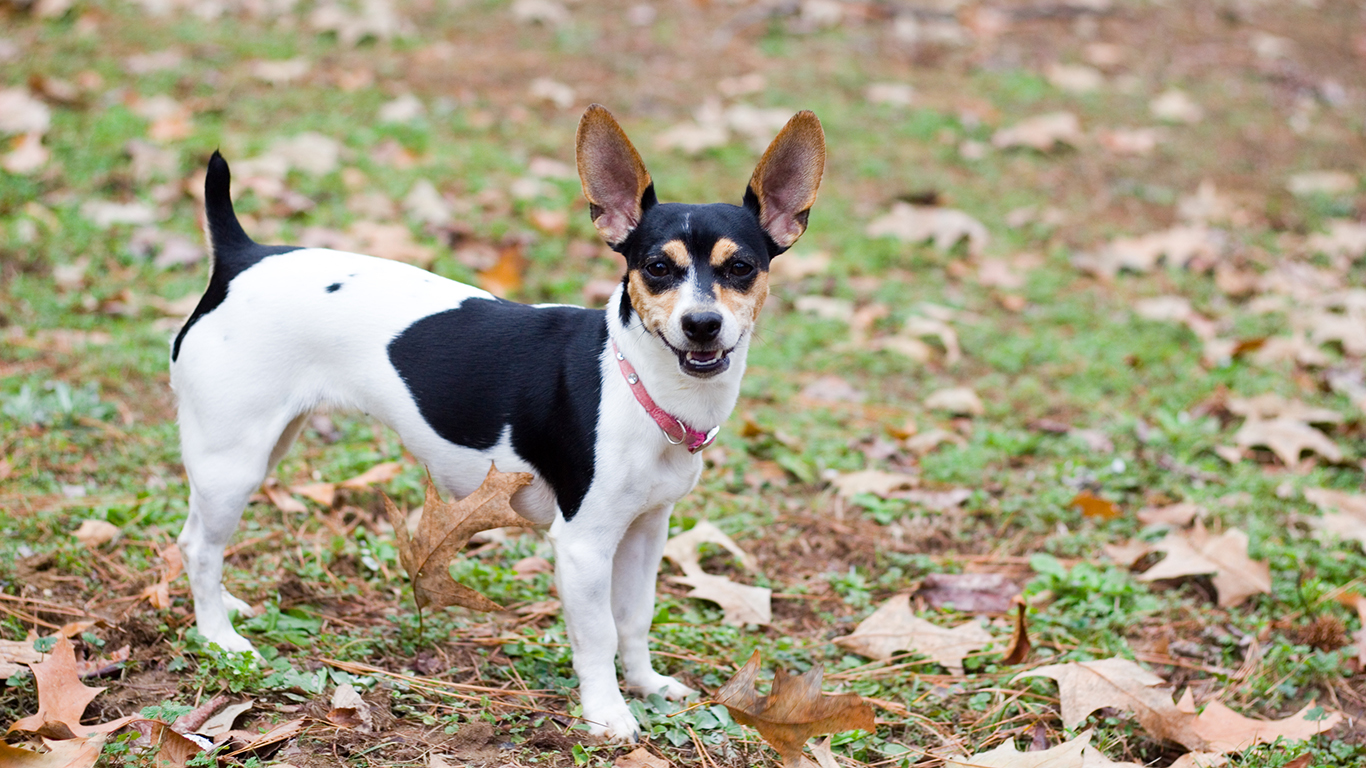
21. Rat Terrier
> Pets available: 1,314
> Avg. life expectancy: N/A
> AKC popularity ranking: 96
As its name implies, the rat terrier was originally bred to hunt for rats and other rodents. It is a good family dog and eager to please its owners. This breed has a lot of energy and needs considerable exercise.
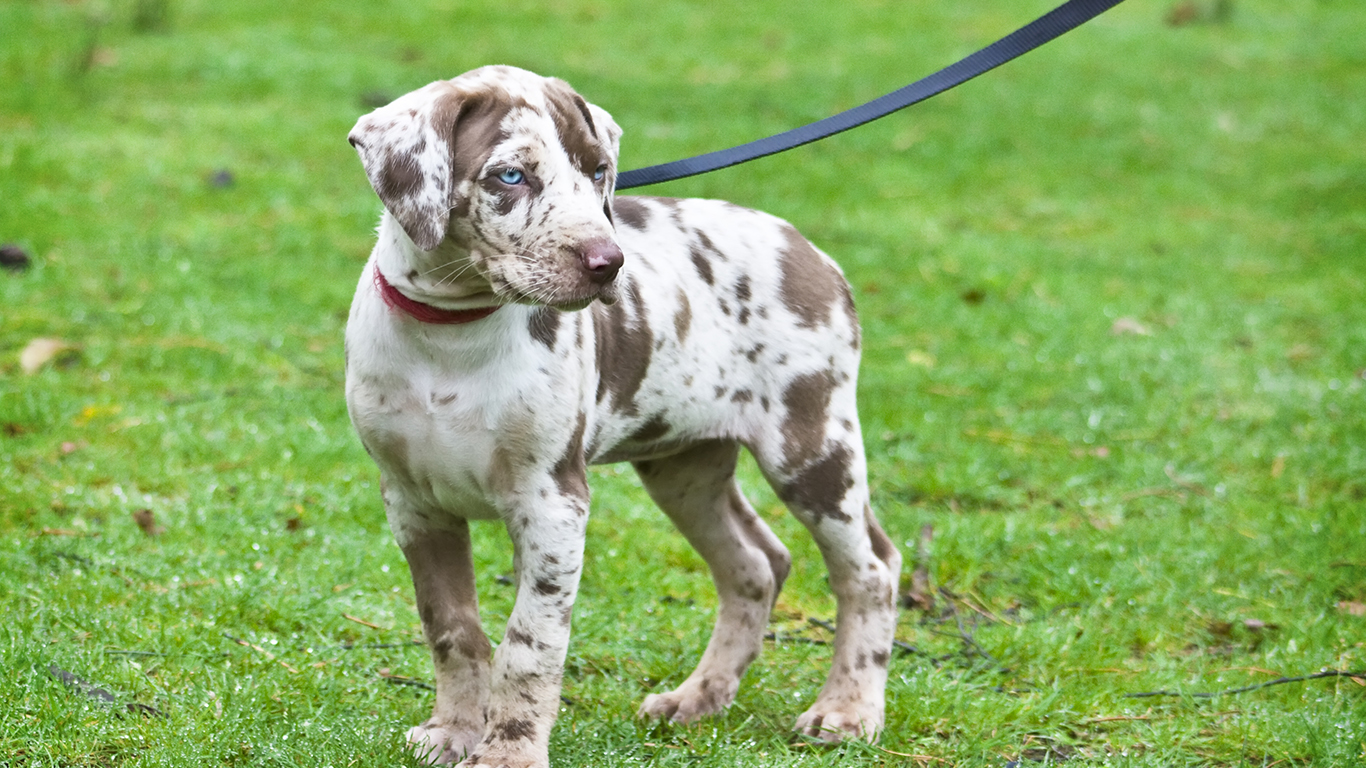
20. Catahoula Leopard Dog
> Pets available: 1,338
> Avg. life expectancy: N/A
> AKC popularity ranking: N/A
The Catahoula is named after Catahoula Parish, Louisiana, and became the state dog in 1979. It is the only native domesticated North American breed, developed by Native Americans and early settlers. It is the most aggressive of the cattle dogs and is not a good city dweller.
[in-text-ad]

19. Shih Tzu
> Pets available: 1,502
> Avg. life expectancy: 13.4 years
> AKC popularity ranking: 20
The shih tzu is a toy dog breed with a friendly nature, a long life expectancy, and devoted fans. It can be stubborn and requires careful training, and its beautiful coat requires regular grooming.
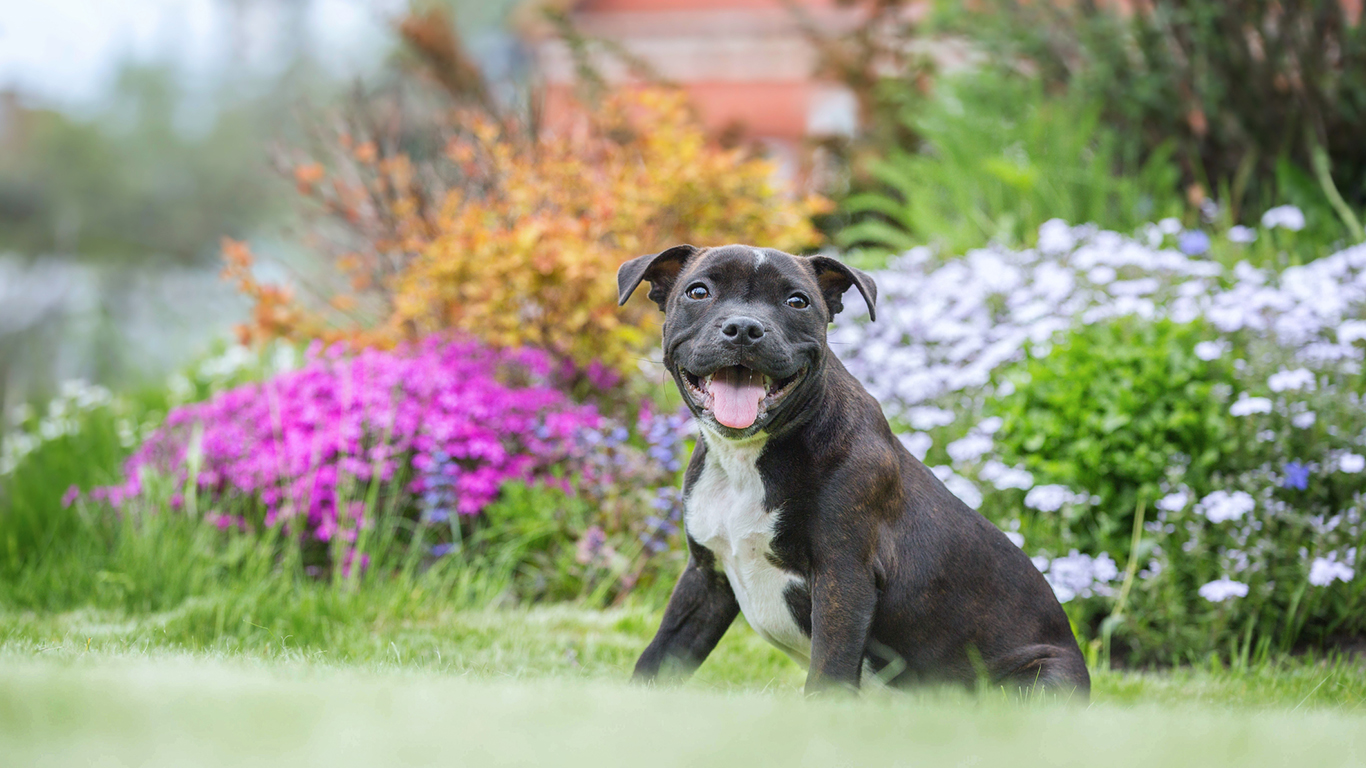
18. Staffordshire Bull Terrier
> Pets available: 1,503
> Avg. life expectancy: 10 years
> AKC popularity ranking: 82
The Staffordshire bull terrier is a British breed and is smaller than its cousin, the American Staffordshire terrier. Both are considered pit bull dogs, which have a bad reputation. However, they are brave, tenacious, and can make for great pets when properly trained.

17. Miniature Pinscher
> Pets available: 1,520
> Avg. life expectancy: 15 years
> AKC popularity ranking: 68
The Miniature Pinscher is a small, smart, sturdy, and occasionally stubborn dog with a distinctive gait. While good with families and in apartments, this dog likes to bark and needs a lot of exercise.
[in-text-ad-2]
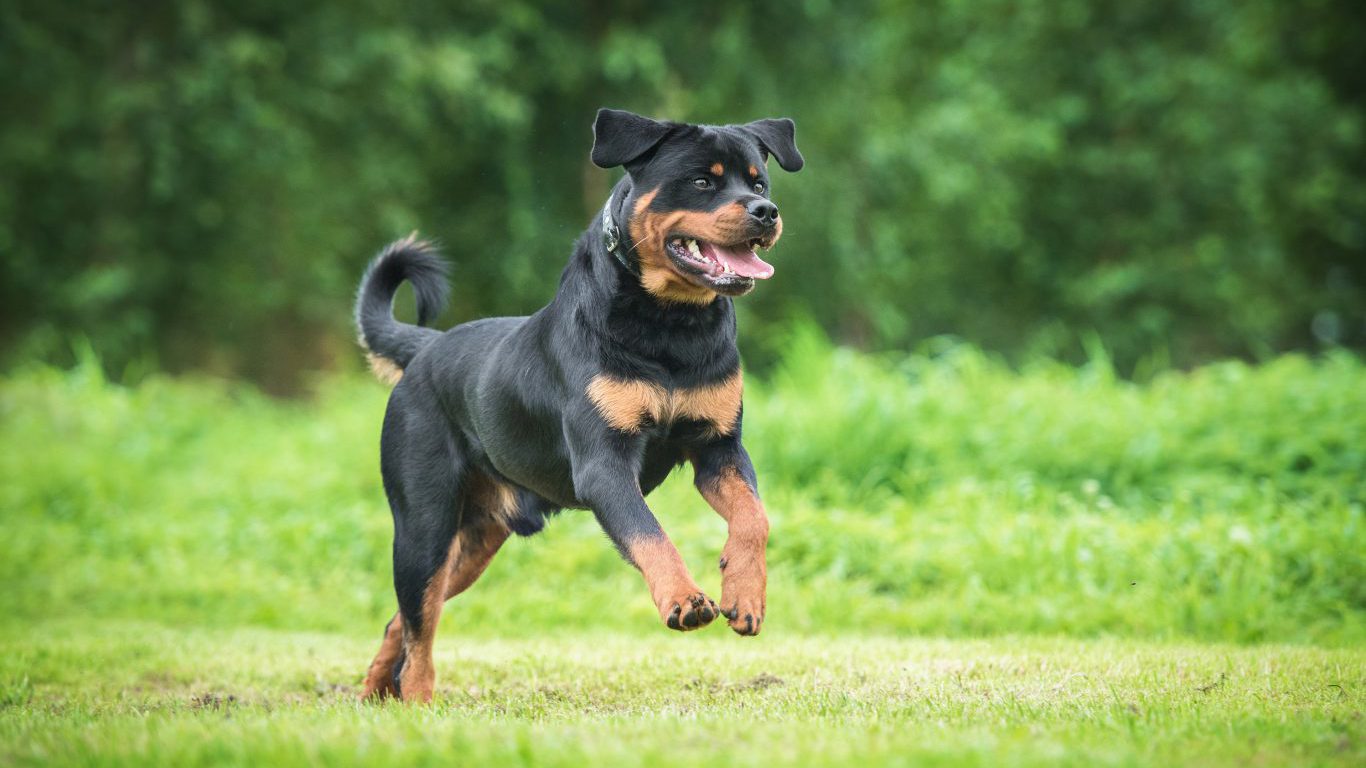
16. Rottweiler
> Pets available: 1,559
> Avg. life expectancy: 9.8 years
> AKC popularity ranking: 8
The rottweiler is one of the oldest herding breeds, and may have been around during the Roman Empire. It combines intelligence, strength, strong protective instincts, and endurance. The rottweiler has often been portrayed in the media as dangerous, however, the AKC describes the animal as “a calm, confident and courageous dog.”

15. Jack Russell Terrier
> Pets available: 1,616
> Avg. life expectancy: 13.6 years
> AKC popularity ranking: 90
Bred as working dogs, Jack Russell terriers have a lot of energy, drive, and excel at sports. However, they need careful training, socialization, and a lot of exercise. “Many experienced, as well as inexperienced, dog owners are overwhelmed by the demands of a Jack Russell terrier,” The Jack Russell Terrier Club of America noted on their website. “[This leads] to the dogs being abandoned even before they reach adulthood.”
[in-text-ad]
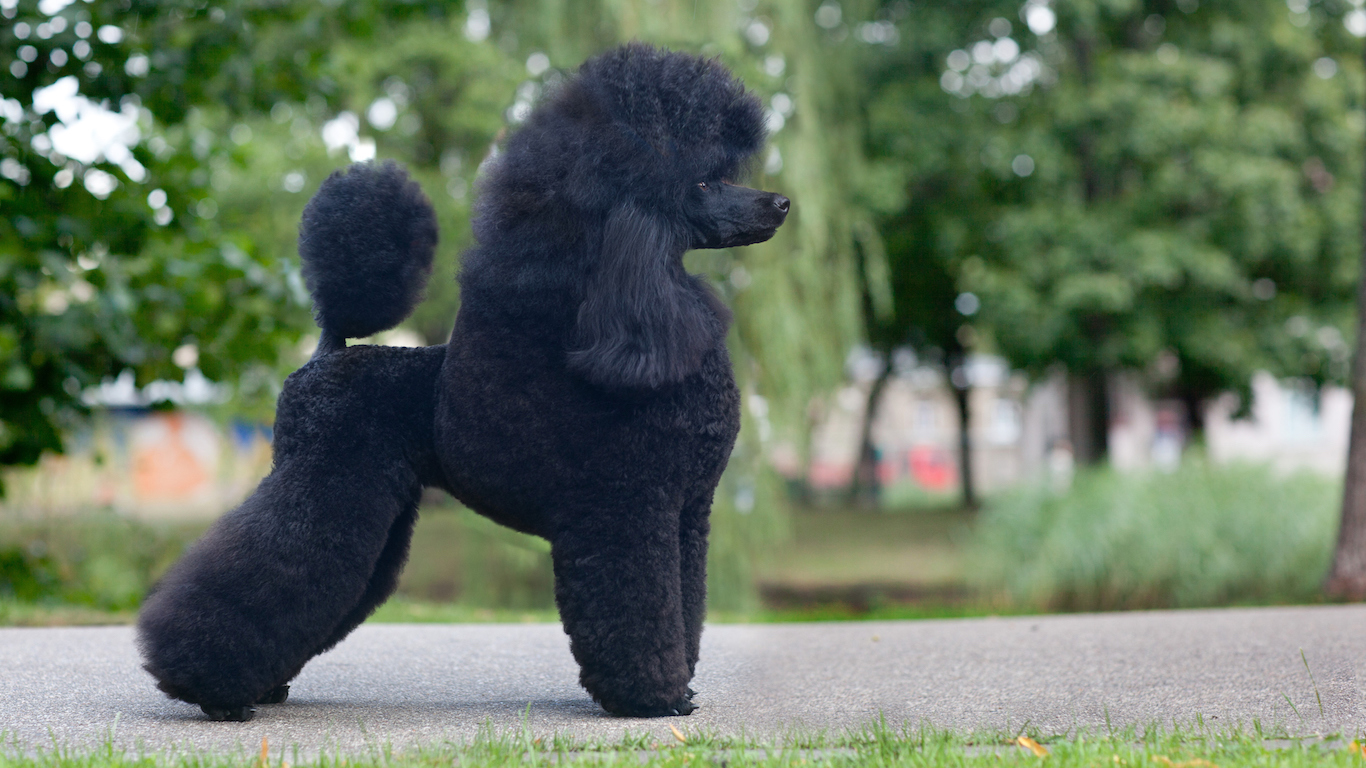
14. Poodle
> Pets available: 1,700
> Avg. life expectancy: 15 years
> AKC popularity ranking: 7
Poodles come in different sizes, including standard, miniature, and toy. They are skilled at many dog sports and activities, and often win Best in Show prizes at major competitions. Poodles don’t shed, making them good pets for people with allergies. However, they are prone to a number of health conditions, including hip dysplasia and eye disease.
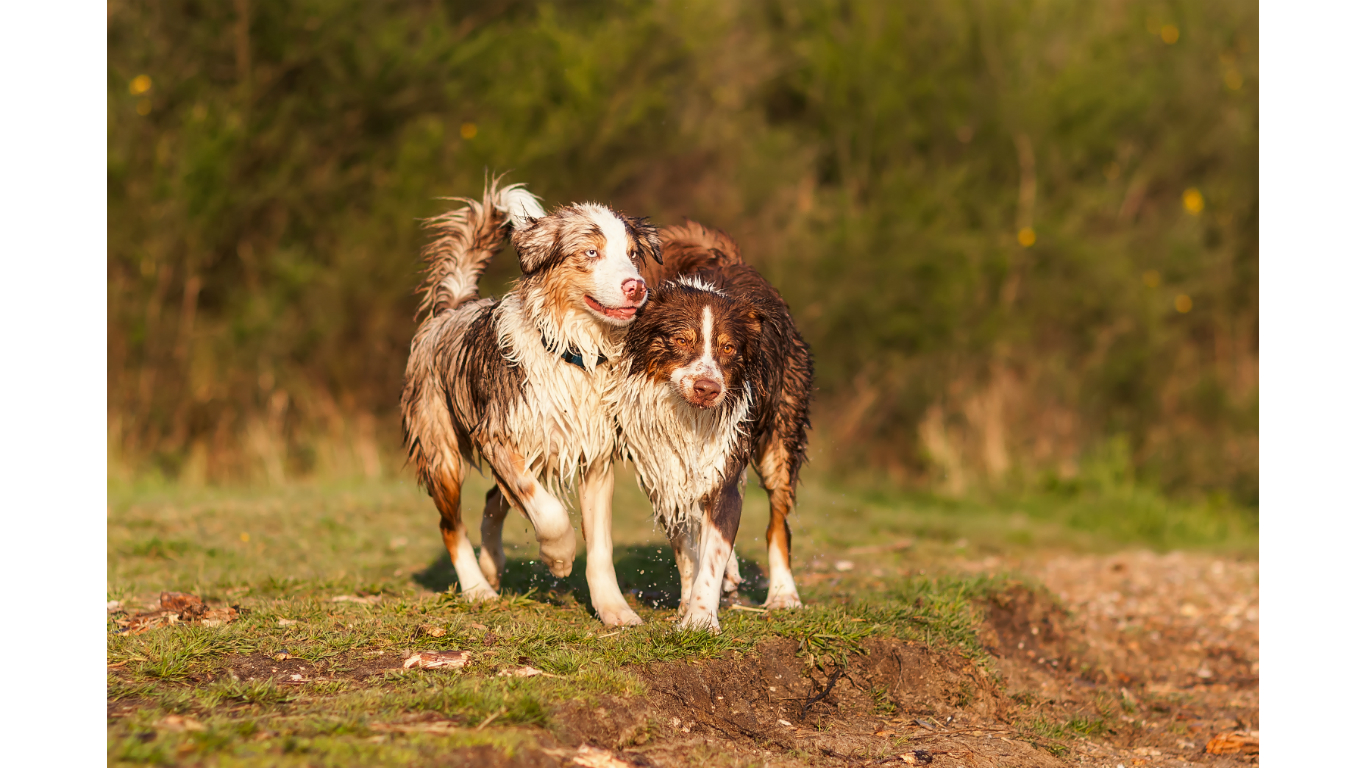
13. Australian Shepherd
> Pets available: 1,715
> Avg. life expectancy: 13 years
> AKC popularity ranking: 16
The Australian shepherd is an intelligent dog with strong herding and guarding instincts. It needs a lot of exercise, and preferably a lot of space in which to do it or it may become destructive out of frustration.
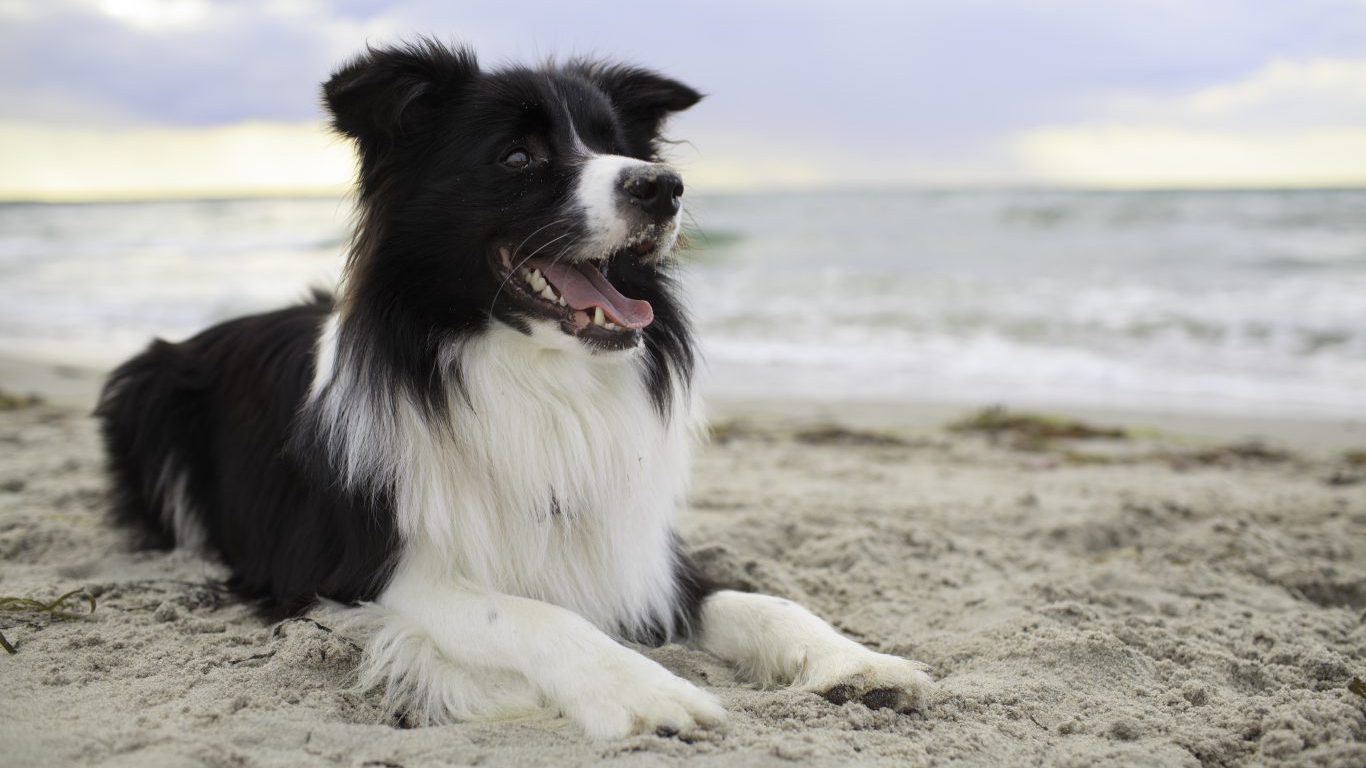
12. Border Collie
> Pets available: 2,614
> Avg. life expectancy: 13 years
> AKC popularity ranking: 38
The border collie is widely considered to be the most intelligent dog breed. In fact, it was bred for its intelligence and obedience and has tremendous herding abilities. It is trainable and has protective instincts. However, it also needs more physical exercise and mental stimulation than many other breeds.
[in-text-ad-2]

11. American Bulldog
> Pets available: 3,445
> Avg. life expectancy: 6.7 years
> AKC popularity ranking: 4
The American bulldog would love to be your lap dog, even if its 50-pound frame might be a bit too heavy for you. The bulldog makes a good guard dog and family companion, but it can be aggressive towards strangers and other animals if not properly socialized.
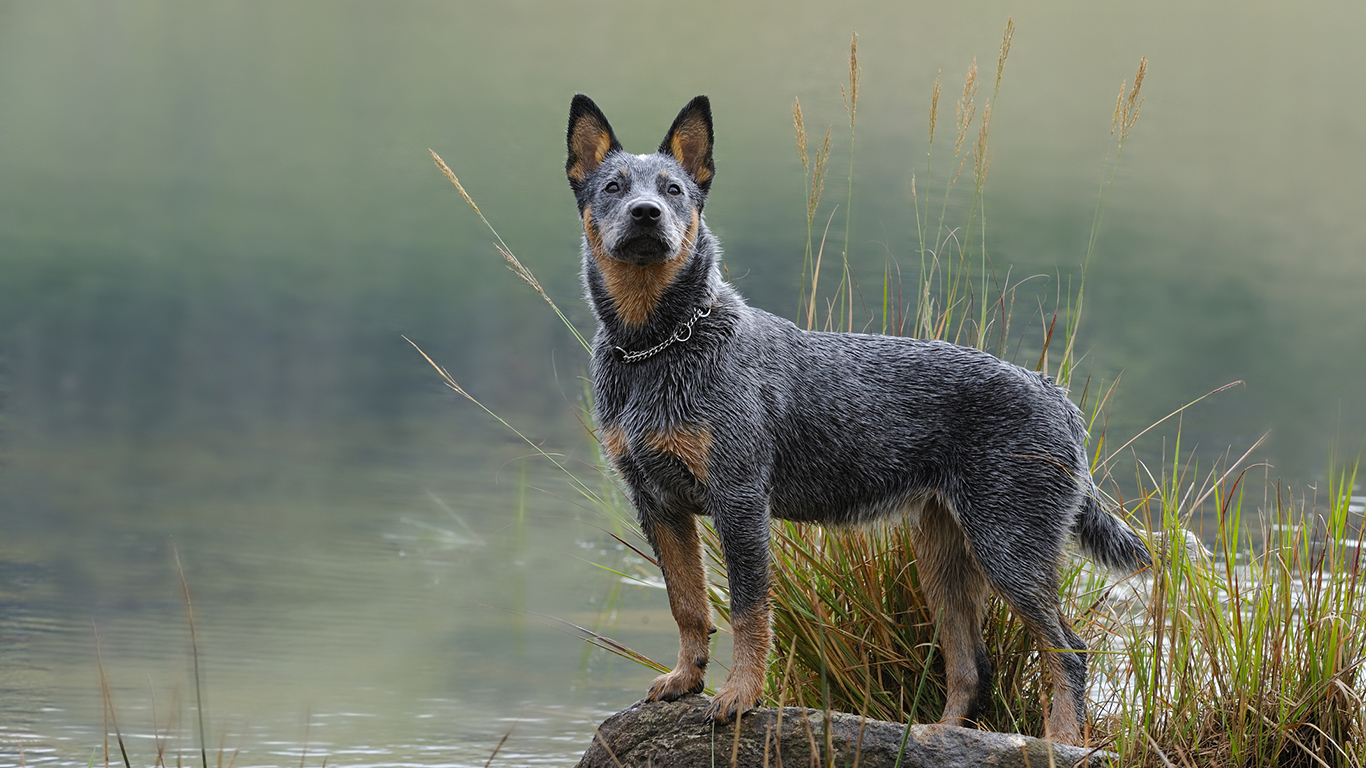
10. Australian Cattle Dog
> Pets available: 3,798
> Avg. life expectancy: 13.5 years
> AKC popularity ranking: 54
The Australian cattle dog is known for its agility. Bred to herd animals many times its size, it is not easily intimidated. The animal needs a lot of exercise – more than a daily walk – and mental stimulation. If not given enough “work,” it will not be happy.
[in-text-ad]
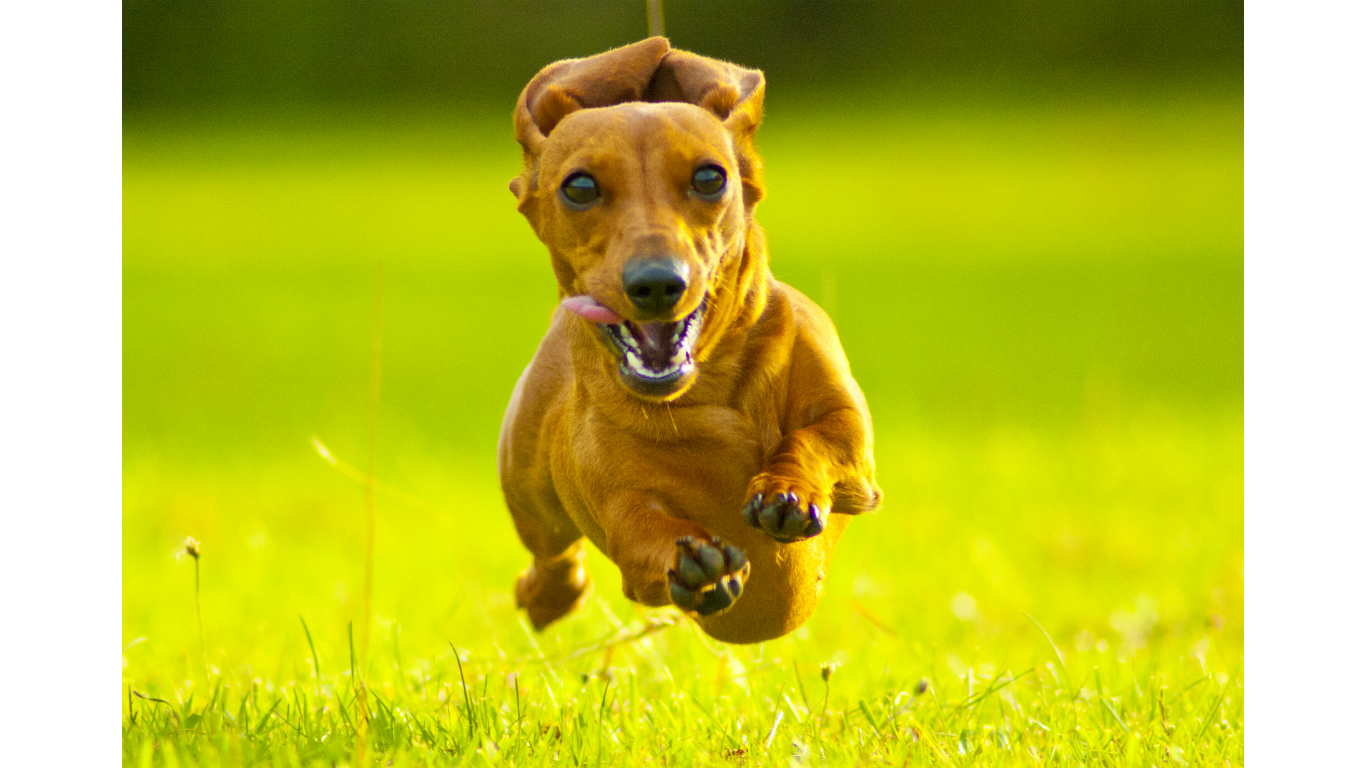
9. Dachshund
> Pets available: 3,858
> Avg. life expectancy: 12.2 years
> AKC popularity ranking: 13
Dachshunds are lovable, playful companions and an ideal pet for many homes, according to the AKC. The name is German for “badger hound.’’ The dachshund’s hunting ability and low build make it well suited for below-ground work. The animals are adaptable and only require moderate exercise.

8. Beagle
> Pets available: 4,375
> Avg. life expectancy: 13.3 years
> AKC popularity ranking: 5
Beagles are famous as hunting dogs and are also used by customs agencies around the world. They were bred to hunt in packs and enjoy the company of other dogs, as well as people. They are very active and need a lot of exercise.
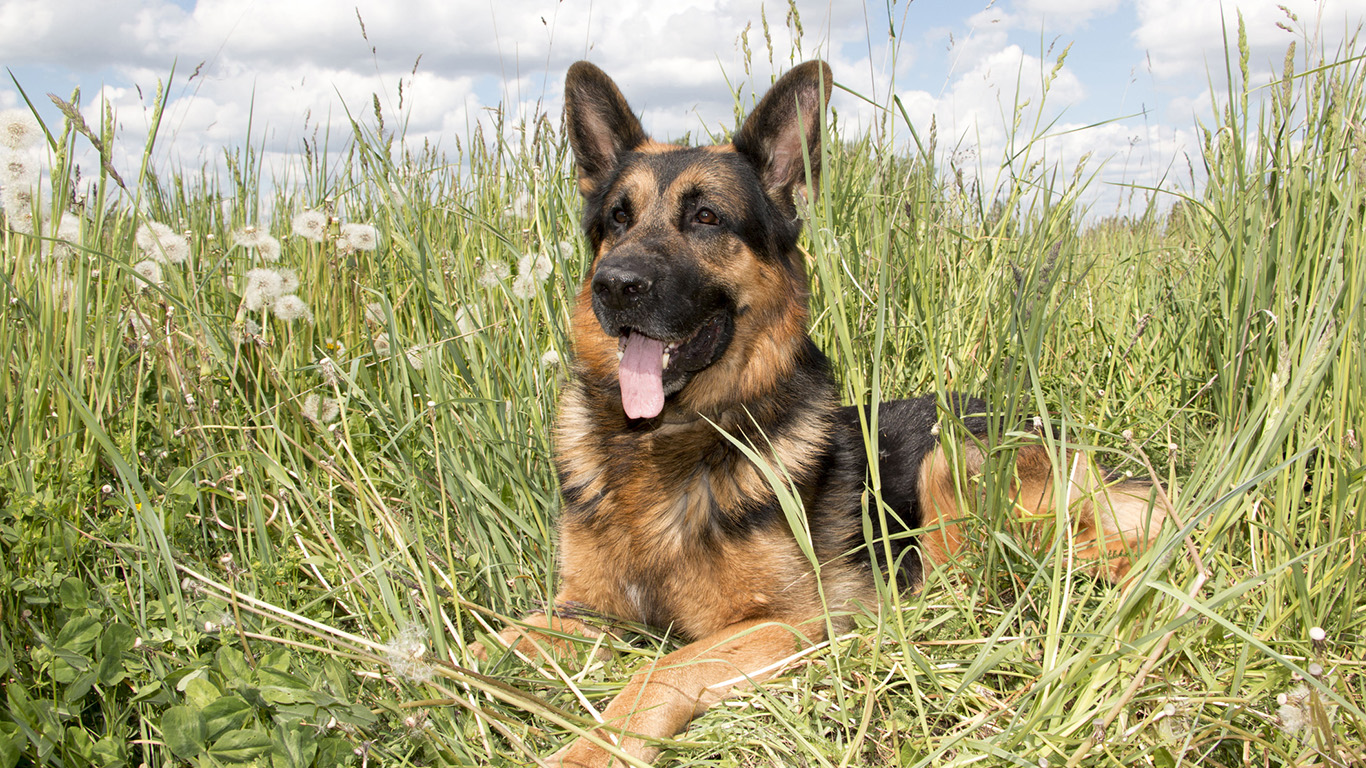
7. German Shepherd
> Pets available: 5,050
> Avg. life expectancy: 10.3 years
> AKC popularity ranking: 2
The German shepherd is the second most registered breed by the AKC, explaining its high ranking on our list. Originally bred for herding sheep, it has become the first choice for many roles because of its intelligence, trainability, and obedience. German Shepherd roles include disability assistance, search and rescue, and police and military work. Even as a family pet, German shepherds need careful training and exercise.
[in-text-ad-2]
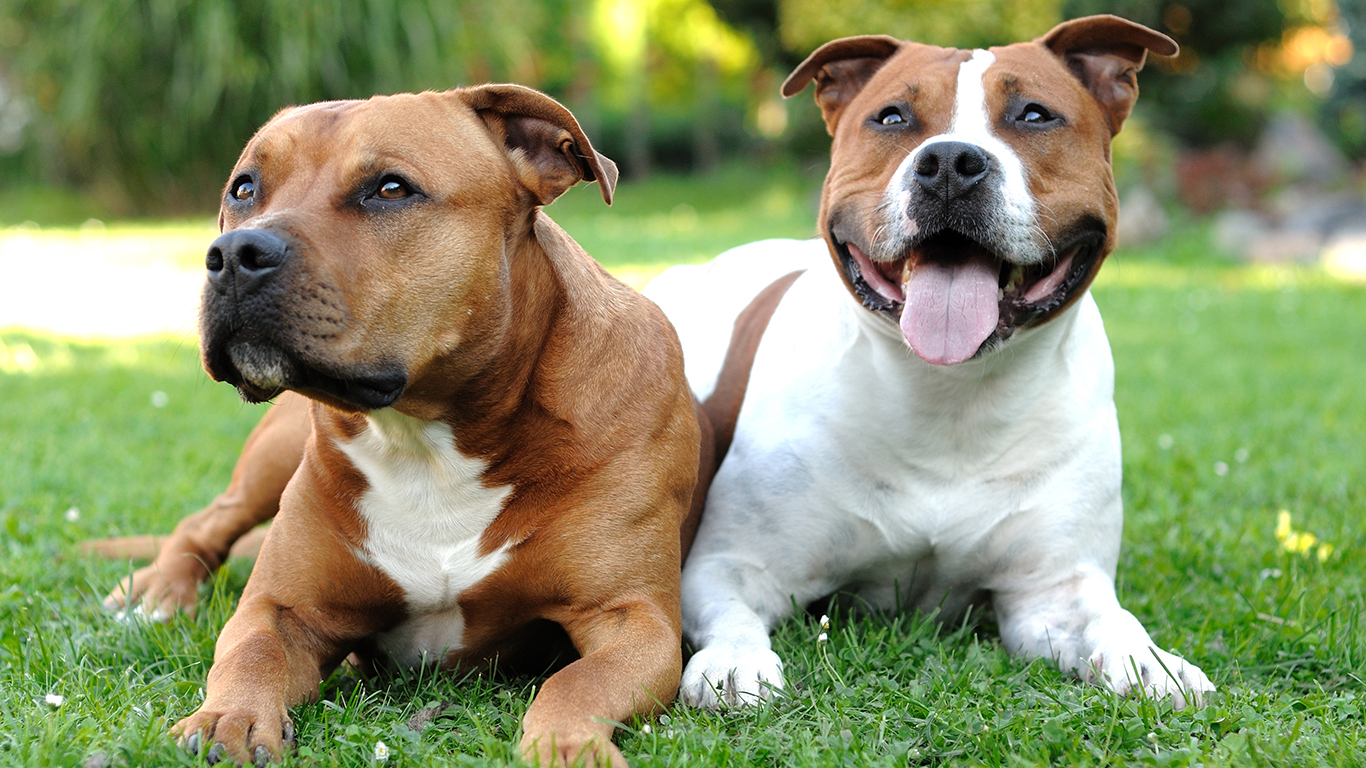
6. American Staffordshire Terrier
> Pets available: 5,163
> Avg. life expectancy: 13 years
> AKC popularity ranking: 81
The American Staffordshire terrier is considered a pit bull type and is bigger than its British cousin, the Staffordshire Bull Terrier. The animal is naturally playful, which can be a challenge when it is being trained. It has a stubborn streak that can make it difficult to train.

5. Boxer
> Pets available: 6,141
> Avg. life expectancy: 10.4 years
> AKC popularity ranking: 10
The boxer was first imported to the U.S. from Europe after World War I and took a while to catch on. Its popularity may have received a boost when actors Humphrey Bogart and Lauren Bacall were given one as a wedding present. The boxer has many positive attributes and makes a good service dog — but it can be excitable and headstrong.
[in-text-ad]
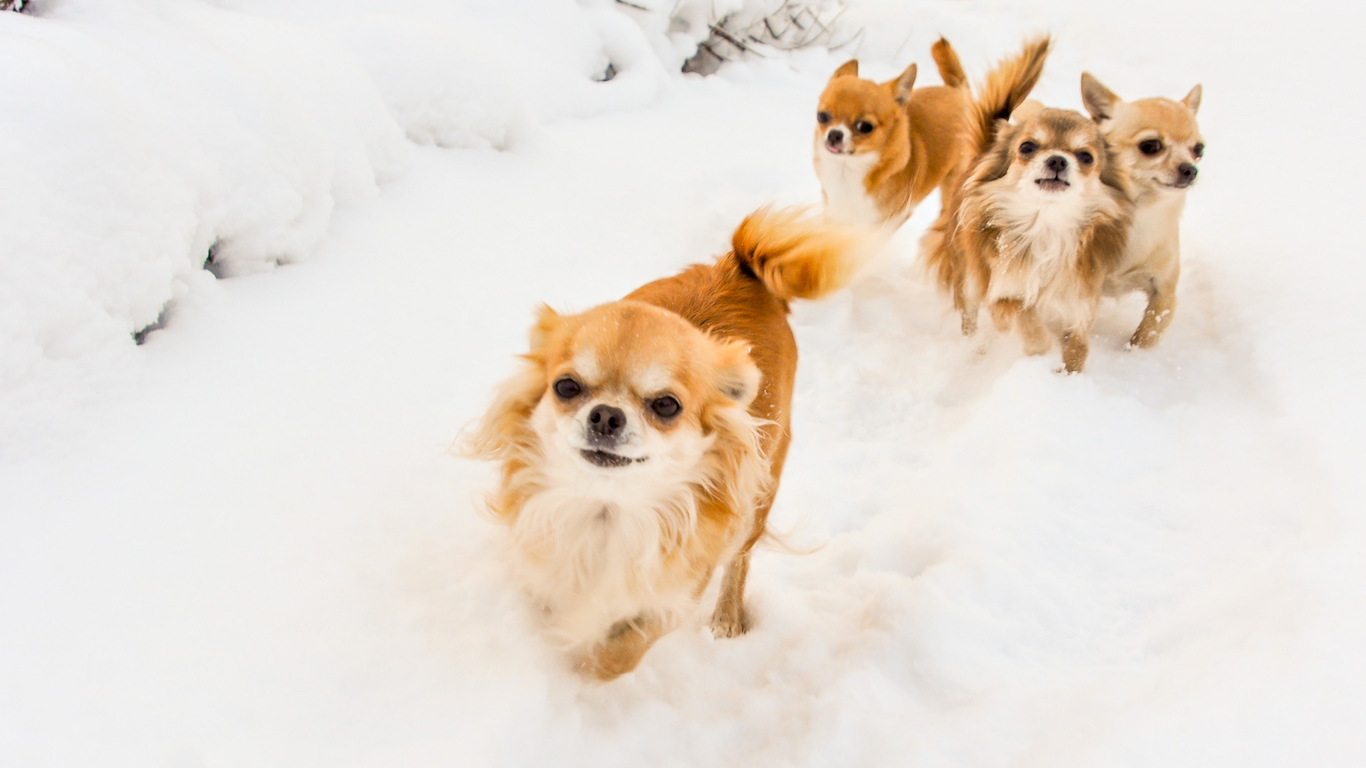
4. Chihuahua
> Pets available: 12,873
> Avg. life expectancy: 13 years
> AKC popularity ranking: 30
The Chihuahua is the smallest breed of dog, although often with a big personality. It is known for becoming fiercely loyal to one person, and may not be the best choice for families with young children. It’s not an outdoor or a cold weather dog either, having been bred for the warmth of Mexico.

3. Pit Bull Terrier
> Pets available: 19,568
> Avg. life expectancy: 11 years
> AKC popularity ranking: NA
Pit bulls first appeared in 19th century Great Britain, when dog breeders started experimenting with crosses between bulldogs and terriers. The animals have a reputation for being aggressive, and a number of countries and cities have restrictions or bans on the ownership of American pit bull terriers. However, the United Kennel Club, the first registry to recognize the breed, says they make excellent family companions and have always been noted for their love of children, although they do need careful socialization and obedience training.
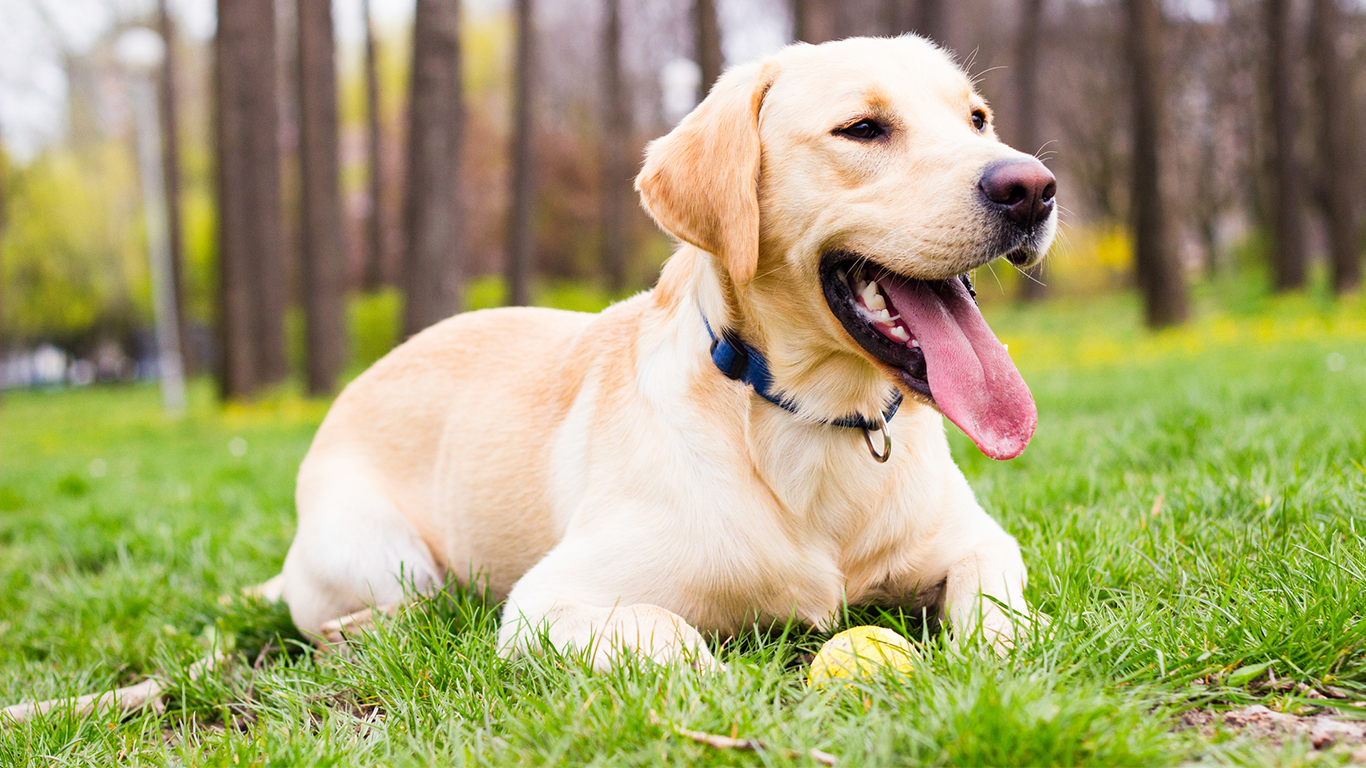
2. Labrador Retriever
> Pets available: 20,739
> Avg. life expectancy: 12.6 years
> AKC popularity ranking: 1
The Labrador retriever has been the most popular American breed for 26 consecutive years, according to the AKC. With so many people owning the high-spirited Labs, perhaps it shouldn’t be a surprise that many of them end up in shelters. That’s too bad as they have so many positive attributes. Other than needing a lot of exercise they are gentle, friendly, and easy to care for.
[in-text-ad-2]

1. Mixed breed
> Available: 35,808
> Terrier: 9,378
> Hound: 6,094
> Shepherd: 5,950
Mixed breeds make up an overwhelming majority of dogs that end up in shelters. The truth is that there is no underlying factor to explain this remarkably high number. These dogs may not have a definite breed because strays that are picked up and taken to shelters are not always identified. Due to the sheer number of rescue animals, nearly 10,000 are euthanized every day in shelters across the United States.
Methodology and detailed findings
To identify the 30 dog breeds most commonly found at rescue shelters, 24/7 Wall St. reviewed data from PetFinder.com. This website represents most of the shelters and rescue groups in the United States and provides real-time data for the various breeds listed as available for adoption. Many of the dogs found at the rescues are mixes but are identified by the breed that best matches their looks and personalities. PetFinder.com analyzed over 240 dog breeds.
24/7 Wall St. added information related to each breed’s personality, trainability, and other traits from the American Kennel Club. AKC experts used breed standards, written by dog breed organizations that specify size, activity level, intelligence, and other attributes.
Average life expectancy data comes from Paul Jones et al’s study, “Single-Nucleotide-Polymorphism-Based Association Mapping of Dog Stereotypes.” This research analyzed the DNA of 148 domestic dog breeds based on their size, temperament, trainability, and their average age at death. The longevity data primarily represents owner surveys.
100 Million Americans Are Missing This Crucial Retirement Tool
The thought of burdening your family with a financial disaster is most Americans’ nightmare. However, recent studies show that over 100 million Americans still don’t have proper life insurance in the event they pass away.
Life insurance can bring peace of mind – ensuring your loved ones are safeguarded against unforeseen expenses and debts. With premiums often lower than expected and a variety of plans tailored to different life stages and health conditions, securing a policy is more accessible than ever.
A quick, no-obligation quote can provide valuable insight into what’s available and what might best suit your family’s needs. Life insurance is a simple step you can take today to help secure peace of mind for your loved ones tomorrow.
Click here to learn how to get a quote in just a few minutes.
Thank you for reading! Have some feedback for us?
Contact the 24/7 Wall St. editorial team.
 24/7 Wall St.
24/7 Wall St. 24/7 Wall St.
24/7 Wall St. 24/7 Wall St.
24/7 Wall St.


